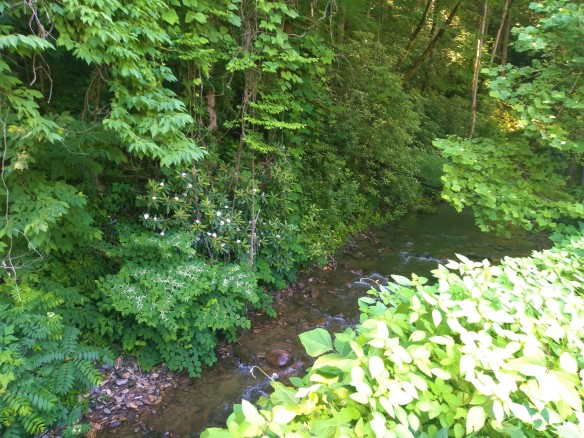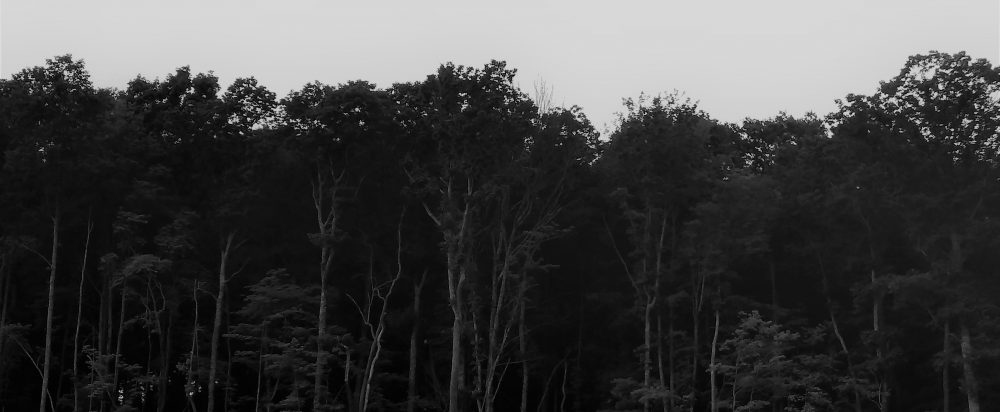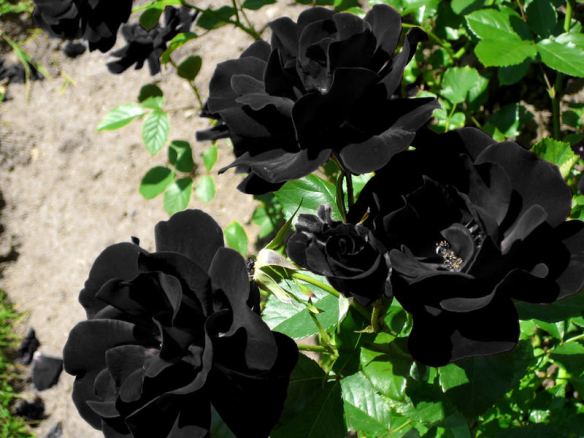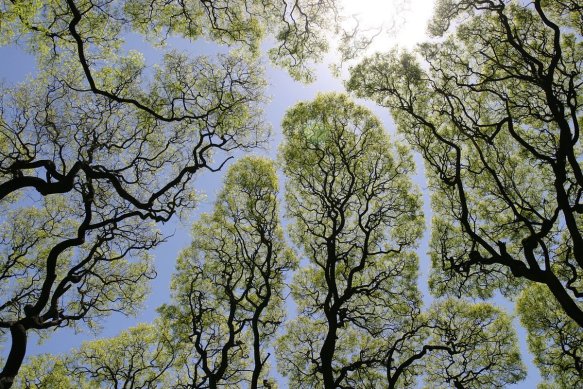Scientists said this past July was the hottest one on record. Each summer has been, on average, hotter than the one before it, and the hottest summers have nearly all been since 2000. I bet this past August will be the hottest on record too.
I don’t know about you, but I believe the scientists about this, not the orange narcissist sitting in the Oval Office, a man who actually ordered scientists at NOAA to lie about where Hurricane Dorian made landfall, in order to save his fragile ego from having to face the consequences of being wrong.
But I promise I’m not getting on my political soapbox today. I just wanted to talk about the weather — and the strange things I’ve been observing that may be due to climate change.

It’s the middle of September, and normally by now, even in a mid-South state like North Carolina, the weather is starting to cool down into pleasant, warm sunny dry days and cooler nights. A few of the trees begin to show fall colors (even though “fall colors” around here often means some shade of brown, maroon, or sickly yellow). September in this part of the country looks like summer past its expiration date: still summer, but the trees and plants all have a tired, overgrown, overripe look about them, like fruit that’s still edible but on the verge of going bad.
But this September has been the hottest I can remember. In fact, it’s hotter than it was in August, and August heat here is almost unbearable every year. The temperature has been soaring up into the high 80s and 90s nearly every day this month so far, with a heat index that’s about the same or even higher, and the nights are muggy and bring little relief.
It’s a humid, oppressive heat, the kind that makes a person literally drip and plasters my hair down to my head like a helmet and makes my hair straightener almost useless. It’s the type of heat that makes you not want to do anything, but at the same time you can’t really get any rest either. At night in bed, without the air conditioning going at full blast, I toss and turn as if in a fever dream, and in the morning my bed is soaked with sweat. It’s as if Florida followed me back here in August.
And the bugs. Holy shit, the bugs. Not bees and butterflies and other “nice” insects that do useful things for us, and don’t bother you and invade your personal space, but nasty, hateful, biting bugs that have no respect for personal boundaries. So, the problem’s not an excess of bugs, it’s the kind of bugs. Scientists have discovered there is a shortage of bees and other pollinating insects due to climate change, exacerbated by harmful policies that further destroy them. I’ve seen the decline for myself. Usually there’s a plethora of bees among the many flowering plants here, but this year there did seem to be a dearth of them. I also noticed fewer butterflies. But there’ve been mosquitoes in great swarms this year (probably due to the surplus of rain we had in July and August), and right now I’m covered in their nasty, itchy weals. Blood loving insects, such as mosquitoes and fleas, seem unaffected by the hot weather, and in fact they seem to thrive in it. There seems to be an uptick in other unpleasant, seemingly useless insects such as crane flies, fleas, and cockroaches.
Finally, there’s something wrong with the way the natural world looks. As I mentioned earlier, southern states don’t get the stunning array of bright Fall colors that states like Vermont or Colorado enjoy (unless you drive to the Blue Ridge Parkway, where the trees have been deliberately chosen for their autumn color), and most of the trees and other plants should still be mostly deep green anyway.
But the trees don’t just look past their prime. They look downright unhealthy. The other day I was driving down a pretty older suburban neighborhood whose streets are lined with huge, fat old oak trees. These trees are probably well over one hundred years old, but I’ve never seen them look the way they do. They looked like they were dead or dying. All the leaves were still there, but they were a dried up, pale greenish brown, as if they were in a faded discolored old photograph. That’s not normal. I don’t know what was wrong with those trees, but those weren’t fall colors. They looked…dessicated or even burnt. Perhaps the intense heat had done that to them. There’s a fatal condition (shown at the top) that affects oaks and other types of trees called bacterial leaf scorch. Maybe that’s what it is, or maybe it’s some kind of blight. Other trees and plants have that scorched, blighted look too. I’ve also noticed a lot more dead trees.
One of my neighbors is growing a palm tree. Palm trees don’t grow in western North Carolina naturally, but I have to wonder if, with the warm winters we’ve enjoyed the past few years (save a few days with temps in the single digits or teens), it just might survive if this winter proves to be even warmer.
For the past few years, I’ve also noticed the vegetation along the sides of the roads is dead. Maybe it’s being sprayed with pesticides near the road, or maybe it’s the exhaust from the cars, but this seems like something new. I don’t think I ever noticed it until a few years ago.
The sky has a strange look to it, a smogginess I don’t remember ever seeing in this part of the country before. Sometimes near the horizon, it’s so heavy it obscures the view of distant objects, and it has an unpleasant yellowish gray tint to it, a color similar to a bruise, or an approaching thunderstorm even though there’s no storm coming. In fact, it reminds me of the way the air looked on summer days in New York and New Jersey back in the pre-EPA 1970s. Could Trump’s relaxation of environmental regulations already be having visible effects?
Have you noticed similar changes too? Let me know in the comments.
























